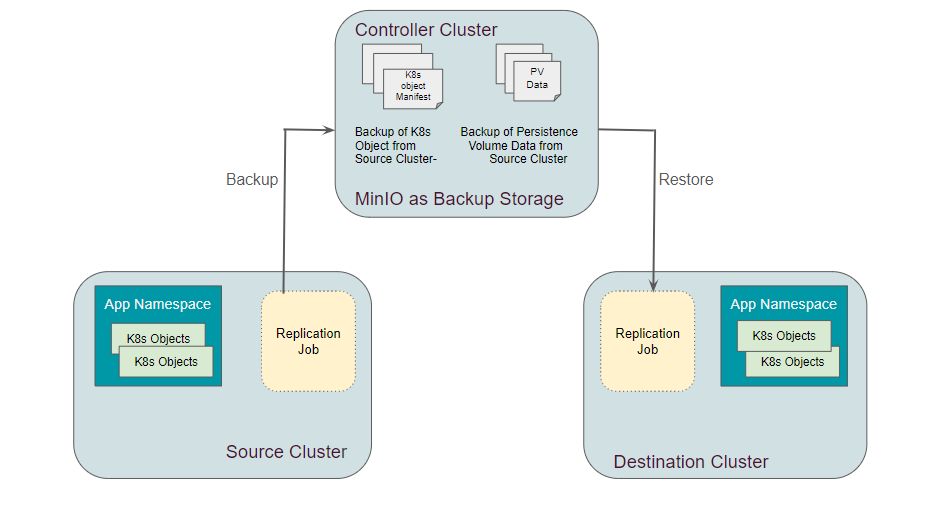Replication Slice
The replication slice type is a new type of slice within the KubeSlice platform. It is designed specifically for efficiently transferring applications/resources from one cloud or data center cluster to another cloud or data center cluster. After the replication of namespaces is complete, they can be integrated into an application slice that manages them. Namespaces can be integrated into an application slice if it is beneficial for them to communicate with remote applications in the source cluster or any other.
The following figure describes a replication slice and its components.

Replication Slice Components
Controller Cluster
The cluster that contains the KubeSlice Controller oversees the Replication operation between clusters.
Source Cluster
The source worker cluster from which namespaces, and the applications within them, are replicated. It must be registered with the KubeSlice Controller.
If you want to back up the data, then you can specify the source and destination worker clusters to be the same. The backed up data can be restored later.
Destination Cluster
The destination worker cluster, to which namespaces are replicated, is also registered with the KubeSlice Controller.
Replication Job
A replication job is used to achieve the replication of namespaces (applications and their resources) from a source cluster to a destination cluster. Each replication job is dedicated to replicating only one namespace and its associated resources. As part of the replication process, the replication slice supports backing up and restoring Kubernetes volumes attached to pods using a file system backup (FSB).
Replication Repository
The replication repository (repo) is an object storage used for copying volumes and Kubernetes objects during replication. The repository must be accessible to all clusters. The replication repository may be hosted in the controller cluster using MinIO or other object storage such as AWS S3 may be specified.